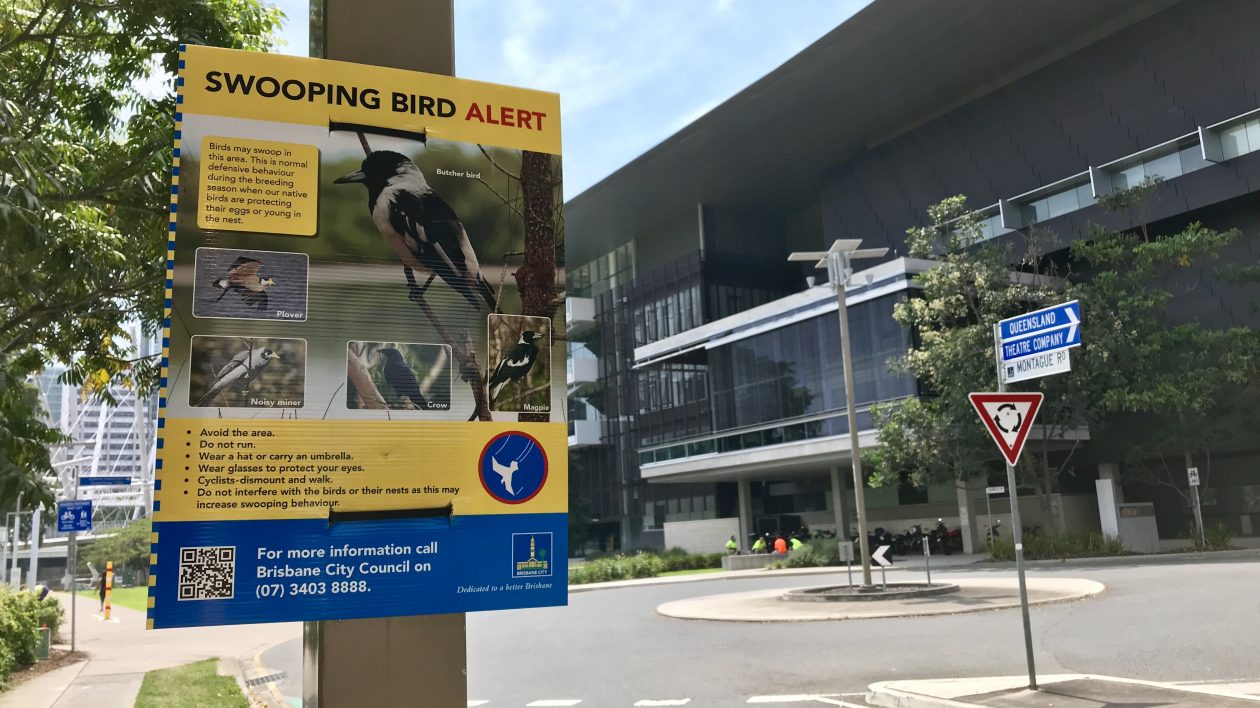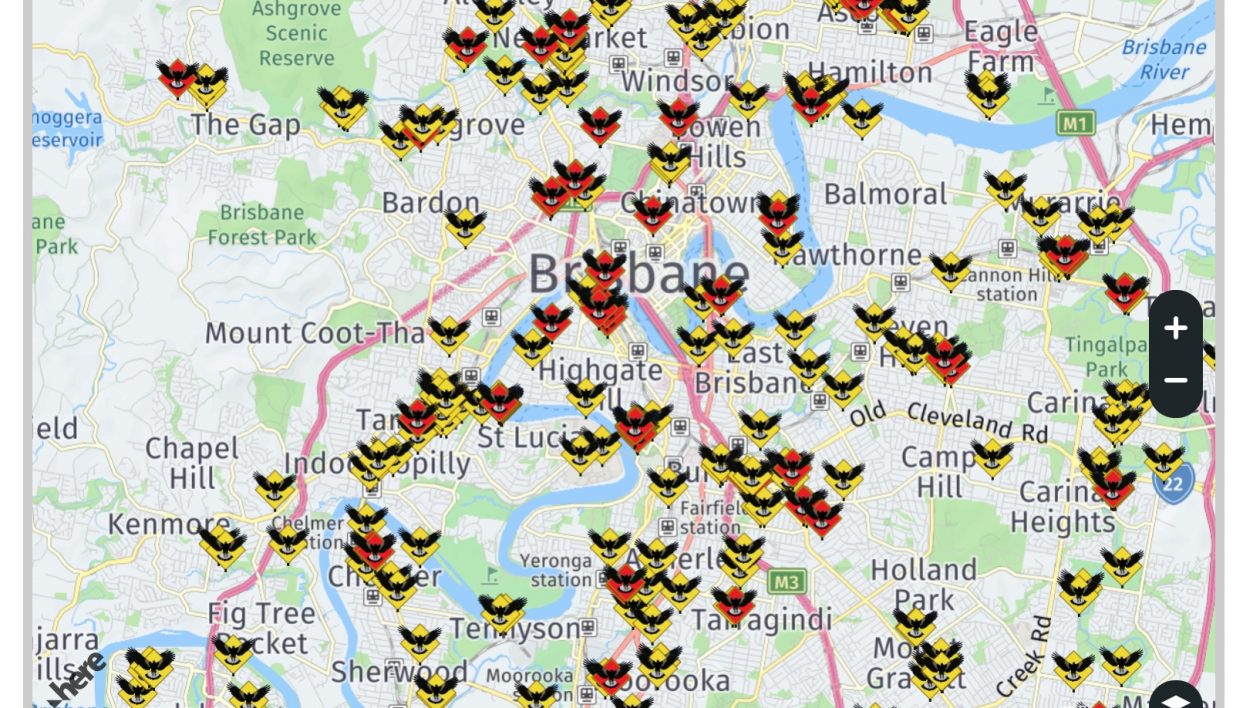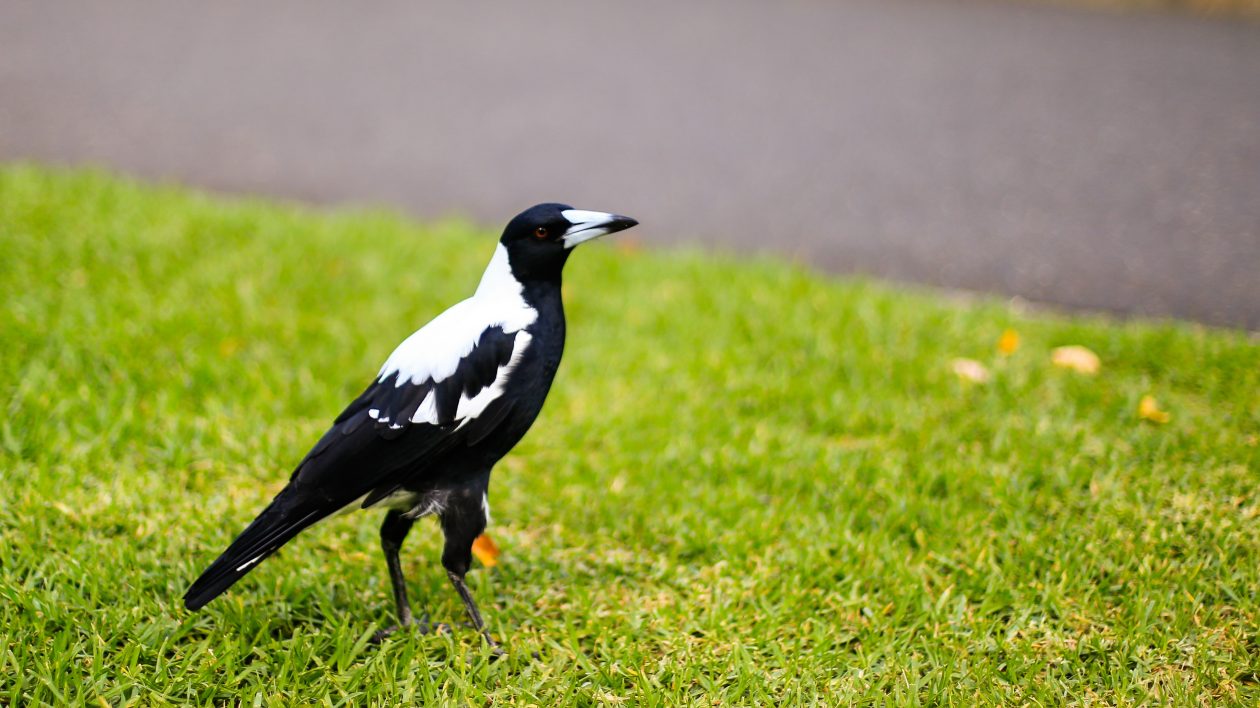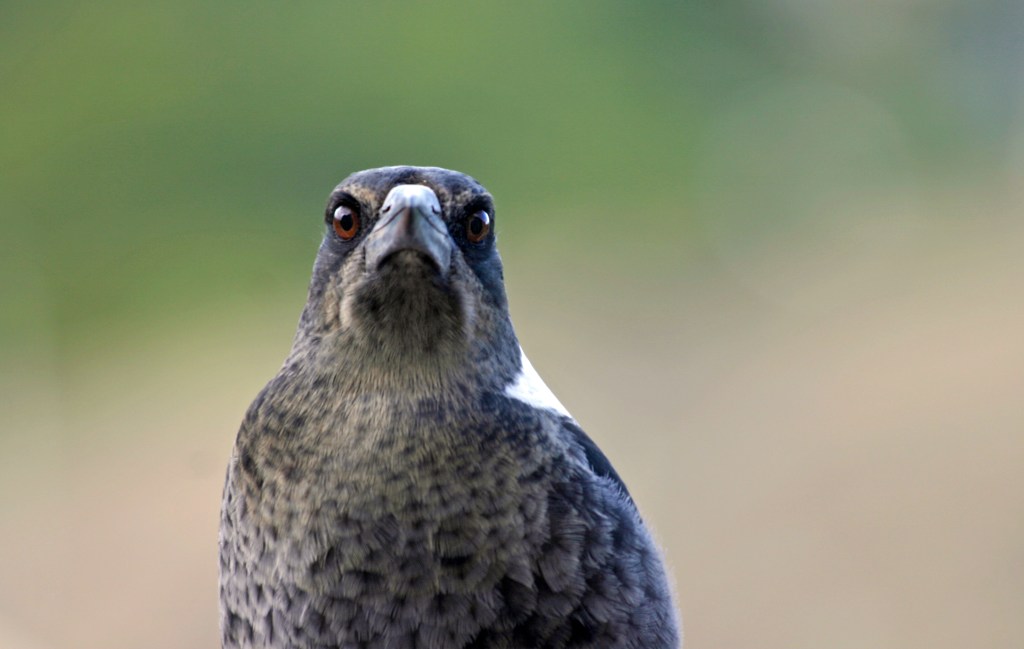It’s not uncommon to hear news reports of an overzealous owl or cranky goose ardently defending its nest, just like the helicopter human parents on the playground nearby.
But nowhere is the “swooping season” as scary as in Australia, where cyclists and pedestrians alike live in sheer terror of one very angry bird: the Australian magpie.
Meet the Magpie Menace
Tourists visiting Australia often arrive terrified of the country’s deadly wildlife, from snakes to saltwater crocs to the mythical, man-eating drop bears.
Meanwhile, Australians are more afraid of the magpies.
The Australian magpie, Gymnorhina tibicen, is a medium-size corvid related to crows, jays, and ravens. Their distinctive song — described by a famous Kiwi poet as “quardle oodle ardle wardle doodle” — is ever-present background noise across most of the continent, much like the calls of robins in North America. But each spring, these wardles take a sinister turn.
During nesting season, from the end of August to late October, Australian magpies take helicopter parenting to the extreme, attacking anyone and everyone that ventures near their nests. Swooping in from behind, they peck and claw at your head, neck, and face, often chasing people up to 300 feet away from the nest.
The experience is so universal that just about every Australian has at least one story of how as a child they walked to school with a bucket or ice-cream container on their heads, often told with a sense of fond nostalgia. (Because, Australians.) And for a newly arrived immigrant like myself, being swooped by a magpie is a rite-of-passage, akin to eating your first slice of vegemite toast without vomiting.
The swoopers are almost always male magpies, but not all dads play defense. In fact, researchers have found that only about 10 percent of magpies are hyper-aggressive, while the others rarely swoop. Even so, that minority inflicts an effective reign of terror.
Suit-clad office workers sweating in the summer heat. Commuting cycles. Schoolchildren playing on the playground. Suburban parents with babies in tow. Dog walkers and postal carriers and garbage men. No one is safe. No one.
Research from Brisbane shows that the birds often develop a particular preference for attacking one type of person, like pedestrians, cyclists, or mail carriers.
Injuries are common, usually minor scratches or shallow cuts from a magpie’s beak and claws. But sometimes they can be more serious: earlier this year, two Perth children were attacked so severely that they may both lose their eyesight in one eye.

Magpie Defense 101
So how does your average Australian survive the nesting season warzone?
Tactic one: Know where danger lurks. In an effort to crowdsource protection, some intrepid soul set up an entire database dedicated to mapping dangerous maggies. The site, Magpie Alert, invites “cyclists, walkers, runners, and concerned members of the public” to report their encounters on a map.
Locations are flagged red if the attack resulted in injury, while a ticker logs the total number of incidences each season. As of early November 2018, the count is up to more than 3,500 attacks and 488 injuries.
The site’s comments section read like an early draft of Hitchcock’s avian horror film, The Birds. A resident of Townsville was so panicked during an attack that they accidently crashed their bike into a wall. One parent, describing an attack on their spouse, commented that “my 5-yr old daughter was screaming ‘Mum is bleeding!’”
And, in my favorite report, a Brisbanite colorfully recounted: “[I] was riding home on my bike and I’m like hell yeah no more maggies… all of a sudden I hear all the workers under the bridge start laughing and I’m like oi mate what you laughing about? And their like don’t worry mate.… next minute I’m getting swooped.” The Annandale resident then swerved his bike into traffic in attempt to flee, which he subsequently describes as “one of those Fast and the Furious scenes.”
Amazing.

Tactic two: Pacify at all costs. Appeasement may make a poor military strategy, but it’s a good option when it comes to magpies. Because those birds are smart. Very, very smart.
Australian magpies are as intelligent as a 3- or 4-year-old human child, according to the Alice Springs Desert Park. (And as our readers who are parents know, toddlers can be surprisingly cunning and vindictive.) The Desert Park also says that a magpie can remember up to 100 human faces for as long as 15 years, so if you piss off the bird once, you’re in for many, many years of swooping.

Tactic three: Play defense and wear a funny hat.
Some of the internet’s best magpie-avoidance tips could be mistaken for advice on how to avoid street crime in New York City: Stay alert and travel in groups for safety. Avoid areas with known offenders. If confronted, stay calm and make eye contact.
Other tips are distinctly magpie-specific: Wear sunglasses and wide brimmed hat to protect the eyes, ears and neck. Or use a buff to make a protective “fabric mullet.” Walk underneath an umbrella. And decorate your cycling helmet.
As frequent magpie victims, Australian cyclists protect themselves by outfitting their helmet with anti-magpie bobby traps. Zip-ties are a popular choice, as the projecting plastic spikes smack any magpies that come in close. (The end result looks like a poorly executed porcupine costume, but that’s part of the charm.)
Maintaining steady eye contact is a well-known avoidance strategy, which is not easy given that maggies have a well-practiced evil glare. Some cyclists take this to the next level and glue or draw googly-eyes on their helmets to ward off unseen rear attacks. Others bikers ride around with a full-size magpie replica on their head.

Tactic four: When all else fails, give up. As the Magpie Alert website says, with typical dry Aussie humor: “Remember magpies are urban species too, so there is generally no escaping them!”
As for me, I’ve made it through this year’s swooping season unscathed. But I know that a terrifying magpie encounter is inevitable. And when it comes I’ll probably act like any other Aussie: forget all of this advice and running screaming down the street, waving my arms.
When you live in a land down under, you’d better run, you’d better take cover.




Kat McDonald and Ian Philp are correct. Australian magpies are not corvids.
Australian Magpies are not corvids & not closely related to crows and ravens.
Your prose is excellent, Justine, such a great read. Ron
Perhaps umbrella hats with battery operated strobe lights attached to the bicycle helmet would help.
Do Magpies “play dead”?
Australian Magpies got the name Magpie because the early settlers thought that these black and white birds had some similarities in appearance to the Magpies in Britain which are in the Corvidae family. They have since been found not to be Corvids. They are most closely related to the Australian Black Butcher Bird in the Artamidae family.
Good advice! Can’t wait to make a fun hat .
Justine, I enjoyed the overall story, I was taken back to the mad birds we endured as kids that would knock our hats off in rural NZ. We had two species of bell-magpie, white-backed and black-backed and I haven’t heard of one being more aggressive than the other. However I would respectfully suggest that a little taxonomic research is required to place them in the correct family. Perhaps a wonderful example of parallel evolution at the family level.
Perfect for Hitchcocks movie..